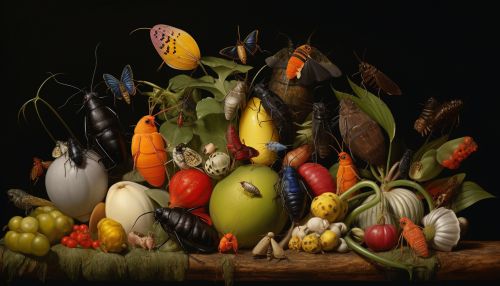Genetic Drift
Introduction
Genetic drift, also known as Sewall Wright effect, is a key mechanism in evolutionary biology that refers to the change in the frequency of an existing gene variant (allele) in a population due to random sampling of organisms. It is a stochastic or random process that can lead to significant changes in gene frequencies over time, independent of natural selection.


Mechanism of Genetic Drift
The process of genetic drift occurs when the frequency of different genetic types, defined by specific alleles, changes over generations in a population. This change in frequency can occur due to chance events, rather than being driven by natural selection. It is important to note that genetic drift can operate in any population, regardless of its size. However, its effects are more pronounced in smaller populations.
Genetic drift can be explained through simple statistical principles. In a population, the allele frequency of a particular gene is determined by the proportion of individuals carrying that allele. If the population is large, the allele frequency is likely to remain stable from generation to generation, as the chance of any one individual's genes being passed on is relatively small. However, in a small population, the contribution of a single individual to the gene pool can have a significant impact. This can lead to fluctuations in allele frequencies over time, which is the essence of genetic drift.
Types of Genetic Drift
There are two primary types of genetic drift: the bottleneck effect and the founder effect.
Bottleneck Effect
The bottleneck effect refers to a situation where a population's size is significantly reduced for at least one generation due to a catastrophic event or environmental change. This sudden reduction in population size can lead to a loss of genetic variation, as the surviving population may not represent the genetic makeup of the original population. As a result, the new population may be dominated by the genetic traits present in the surviving individuals.
Founder Effect
The founder effect occurs when a new colony is started by a few members of the original population. This small population size means that the colony may have reduced genetic variation from the original population. As a result, the new population may be distinctively different, both genetically and phenotypically, from the parent population due to the different frequencies of alleles.
Consequences of Genetic Drift
Genetic drift can have several significant effects on the evolution of species. These include:
1. Loss of Genetic Variation: Genetic drift can lead to a loss of genetic variation within a population. This is because, as certain alleles become more common, others may be eliminated entirely. This loss of genetic diversity can limit a population's ability to adapt to changing environments.
2. Genetic Homogenization: Over time, genetic drift can lead to genetic homogenization, where all individuals in a population become genetically identical. This can increase the risk of extinction, as the population may be unable to adapt to environmental changes or new diseases.
3. Speciation: Genetic drift can contribute to the process of speciation, the formation of new and distinct species in the course of evolution. This can occur when populations become isolated from each other, allowing genetic drift to drive the populations to become genetically distinct.
Genetic Drift vs. Natural Selection
While both genetic drift and natural selection are mechanisms of evolution, they operate in fundamentally different ways. Natural selection is a non-random process, where alleles that confer a survival or reproductive advantage are more likely to be passed on to the next generation. On the other hand, genetic drift is a random process, where changes in allele frequencies occur due to chance alone.
Despite these differences, genetic drift and natural selection often interact in nature. For example, genetic drift can establish new genetic variants in a population, which natural selection can then act upon. Conversely, natural selection can maintain genetic diversity in a population, counteracting the homogenizing effects of genetic drift.
